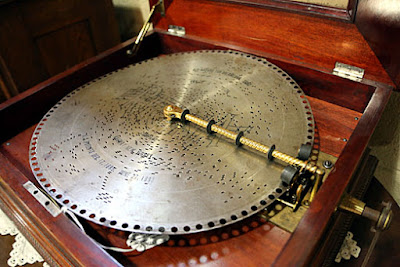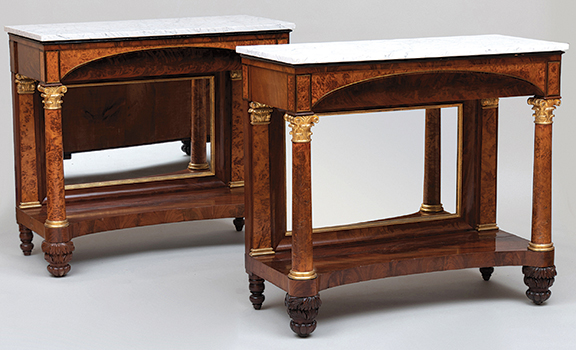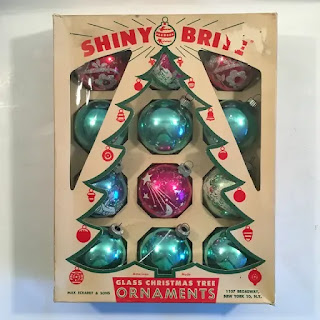 QUESTION: I attend several antique shows each year. While I may occasionally see one or two antique music boxes at one of these shows, I recently discovered a dealer at a smaller show that specialized in 19th and early 20th-century music boxes—both selling and restoring them. All the pieces he had at the show worked, and he played music from several of them for me. It was magical, nothing like the sound of today’s music. These weren’t the small music boxes found in jewelry boxes and such, but larger mechanical musical instruments. I was tempted to purchase one of them, but before I do, I’d like to know more about them. What can you tell me about these music boxes? Also, should I consider purchasing one of them?
QUESTION: I attend several antique shows each year. While I may occasionally see one or two antique music boxes at one of these shows, I recently discovered a dealer at a smaller show that specialized in 19th and early 20th-century music boxes—both selling and restoring them. All the pieces he had at the show worked, and he played music from several of them for me. It was magical, nothing like the sound of today’s music. These weren’t the small music boxes found in jewelry boxes and such, but larger mechanical musical instruments. I was tempted to purchase one of them, but before I do, I’d like to know more about them. What can you tell me about these music boxes? Also, should I consider purchasing one of them?
ANSWER: When people think of mechanical music, most think of music boxes. The early ones like the one you saw appeared probably after the Civil War. Most of the music boxes that collectors seek are either cylinder or disk music machines that were the home entertainment centers of the second half of the 19th century.
 Mechanical music is a live performance of music, played by a machine, without any human intervention, except for winding it up or turning it off. The invention of mechanical music devices allowed people to enjoy music before electricity, when the only option was to attend a live performance or to create their own music.
Mechanical music is a live performance of music, played by a machine, without any human intervention, except for winding it up or turning it off. The invention of mechanical music devices allowed people to enjoy music before electricity, when the only option was to attend a live performance or to create their own music.
Mechanical music dates back to the 14th century, with the invention of the carillon, which automatically played music on tuned bells actuated by hammers on levers by way of a pinned drum. Primarily used in churches to play hymns, the drum could be programmed to play different song selections by moving the pins from one location to another.
 The mechanical pipe organ appeared in the 15th century. This instrument, through valves actuated by pins on the drum, allowed selected pipes to play organ music mechanically. During the 16th century, the mechanical pipe organ gained widespread popularity in Europe, and soon expanded beyond churches and public buildings. It became a must-have novelty for the wealthy. Eventually, cabinetmakers built desks and cabinets to encase carillons or pipe organs. These mechanical devices became so trendy for the well-to-do that famous musicians of the day, including Beethoven, Handel, and Mozart, wrote pieces specifically for them.
The mechanical pipe organ appeared in the 15th century. This instrument, through valves actuated by pins on the drum, allowed selected pipes to play organ music mechanically. During the 16th century, the mechanical pipe organ gained widespread popularity in Europe, and soon expanded beyond churches and public buildings. It became a must-have novelty for the wealthy. Eventually, cabinetmakers built desks and cabinets to encase carillons or pipe organs. These mechanical devices became so trendy for the well-to-do that famous musicians of the day, including Beethoven, Handel, and Mozart, wrote pieces specifically for them.
The music produced by a cylinder music box comes from the "teeth" of a comb that vibrate when struck by tiny pins sticking out from the cylinder. David LeCoultre invented the cylinder music box around 1790, in Brassus, Switzerland.
It wasn’t until the late 18th century that mechanical music experienced any change. In 1796, Antoine Favre, a Geneva clockmaker, patented a device to make carillons play without bells or hammers. His invention paved the way for cylinder boxes, which had a comb of hard steel with a series of teeth or tiny tuning forks, which graduated from long and thick to short and thin. Pins placed on a rotating cylinder, which when moved laterally, plucked these teeth and produced different tunes.
Between 1790 and 1820, the cylinder music box industry grew into an independent entity. Until 1875, it had been a cottage industry, with craftsmen working in their homes, assembling various parts and cases, or arranging musical compositions for use on cylinders. These parts were then taken to a main factory, such as one established by Vaucher FiIls Paillard in 1875, for assembling.
During its infancy, the cylinder music box industry developed in Switzerland. Mermod Freres was the largest company that manufactured these cylinder instruments in St. Croix, Switzerland. In later ears, factories were also established in trance, Germany, Austria, Czechoslovakia, and other countries.
Movements related to the cylinder music box were also parts of watches and clocks. Clockmakers began constructing cylinder boxes in the late 18th century and continued making them well into the late 19th century. Over time, the mechanical music industry saw many advances in technology. Eventually, manufacturers developed over 20 different musical effects by changing the size, placement, tuning, and arrangement of the pins on the cylinder. Most cylinder boxes reproduced music of either a mandolin or a piano forte. The first produced a softer more folksy sound while the second produced a louder bolder sound simulating an early piano. Most mandolin cylinder music boxes played only 4 to 6 tunes while the piano forte version played 12.
 While interchangeable cylinders allowed for the playing of different tunes, it was a cumbersome process to change them. In the late 1880s, all that changed with the introduction in Germany of the disc musical box. This revolutionized the industry because instead of the slow and delicate process of inserting pins in cylinders, the discs could be stamped out by machine. Also, it was easy for people to change the discs on the machines, making it possible for them to hear the latest tunes.
While interchangeable cylinders allowed for the playing of different tunes, it was a cumbersome process to change them. In the late 1880s, all that changed with the introduction in Germany of the disc musical box. This revolutionized the industry because instead of the slow and delicate process of inserting pins in cylinders, the discs could be stamped out by machine. Also, it was easy for people to change the discs on the machines, making it possible for them to hear the latest tunes.
From the last decade of the 18th century to the Civil War, music box cases were fairly plain. During the war, manufacturers began making more elaborate cases, with brass inlay work, tortoise shell, mother-of-pearl, and wood inlays. The instruments produced from 1870 to 1890 were also the most elegant.
 The end of the age of large cylinder instruments came between 1890 and 1914. The disk-type box, as made by Polyphon, Symphonion, Regina and others drove cylinder instruments from the marketplace. Mermod Freres produced some fine large cylinder instruments in the 1890s, but by 1920 the industry was dead.
The end of the age of large cylinder instruments came between 1890 and 1914. The disk-type box, as made by Polyphon, Symphonion, Regina and others drove cylinder instruments from the marketplace. Mermod Freres produced some fine large cylinder instruments in the 1890s, but by 1920 the industry was dead.
On disk boxes, spines jutting up from a flat steel disk played musical combs. Some of the disk boxes stood as high as 8 feet and were powered by a hand-cranked 30-foot spring that has enough power to start up a car.
Miguel Bloom, a resident of Haiti, patented in the United States what may have been the world's first disk music box. Other inventors improved upon his creation and produced the first interchangeable disk instrument in 1886. A spring-wound mechanism turned the two combs on the disk. The following year brought the creation of metal disks with projections beneath them that plucked music combs. In 1889, Paul Wendlend of the Symphonion Musikwerke, a German company, patented the star wheel, a mechanism used in most disk boxes made in later years.
Mermod Freres, a manufacturer active during most of the 19th century, was one of the few companies that made both cylinder and disk instruments. The company made the Stella and Mira disk boxes during the 1890s. The company built the cabinets in oak in furniture styles popular in the United States at that time.
 The Regina Music Company. incorporated in 1894 in Rahway, New Jersey, soon became an important manufacturer of disk-type boxes in the U.S. Symphonion, Polyphon, and Regina captured about 90 percent of the market. An original stand-up model Regina that originally sold for $300 in the 1890s now sells for around $5,000.
The Regina Music Company. incorporated in 1894 in Rahway, New Jersey, soon became an important manufacturer of disk-type boxes in the U.S. Symphonion, Polyphon, and Regina captured about 90 percent of the market. An original stand-up model Regina that originally sold for $300 in the 1890s now sells for around $5,000.
Collecting antique cylinder or disc music boxes can be a costly affair. Plus, they take up as much room as a large piece of furniture in many cases. However, purchasing one or two can add a nostalgic atmosphere to your home.
To read more articles on antiques, please visit the Antiques Articles section of my Web site. And to stay up to the minute on antiques and collectibles, please join the over 30,000 readers by following my free online magazine, #TheAntiquesAlmanac. Learn more about "The Age of Photography" in the 2023 Holiday Edition, online now. And to read daily posts about unique objects from the past and their histories, like the #Antiques and More Collection on Facebook.



















































